Exhibition Intro ~ Map ~ Next section
Imaginative Landscapes

Landscape and the natural world were the subject of some of the most ambitious illustrated books seen by BACA students at The Keep including the lavishly illustrated ‘Temple of Flora’ (1799-1807) from which a detail can be seen above left (with a bee). Above right is an illustration of wasps by Dalziel from J G Wood’s Illustrated Natural History (1863). The student’s poem that opens this section sums up the creative possibilities of these publications where lines between science and art are often blurred. Supposedly factual disciplines like botany or topography merge with aesthetic ideals and myth-making approaches to landscape, plants and animals. These books often showcase nature as a source of visual fascination where the eye can focus in on fine detail or take in wide perspectives. Nature is also dramatized in these illustrations which suggest its potential for narrative, emotional investment and perhaps danger.
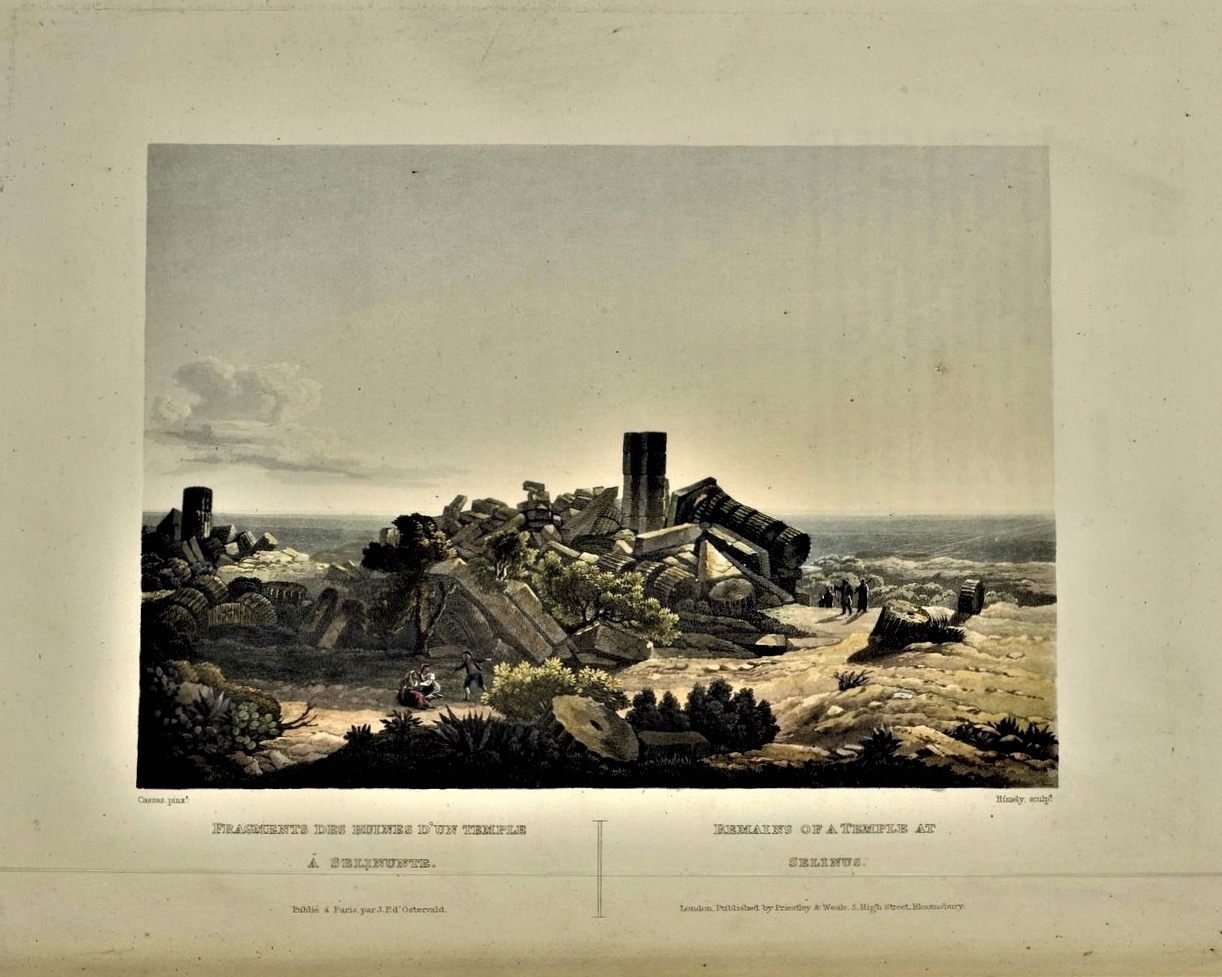
Select Views of Sicily Accompanied by an Historical and Descriptive Account (1825) was one such lavishly illustrated book on landscape. A student describes ‘The Remains of a Temple at Silenus’ (pictured above):
“The Temple is one of three in Selinus the largest one was to worship the Olympian Jupiter. I think it has been abandoned for a long time since lots of trees have grown over the rubble.”
This overgrown archaeological site had great resonance in the early years of the nineteenth century. The eighteenth century had seen wealthy young men travel to Italy to engage with Renaissance art and antiquity on the so-called “Grand Tour.” However, this practice had been disrupted by the French Revolution (1789) and Napoleonic Wars between 1797 and 1815. In the years that followed these turbulent decades, artists and poets reflected on the fragmented ruins of once mighty civilizations. Percy Bysshe Shelley’s famous work Ozymandias (1818) reflects on the broken fragments of a monument to a once powerful ruler. The View of the Temple of Juno-Lucina and the ruins of the “Antient” walls of Agrimentum (seen below) is another of the sites of a ruined temple illustrated in Select Views of Sicily.
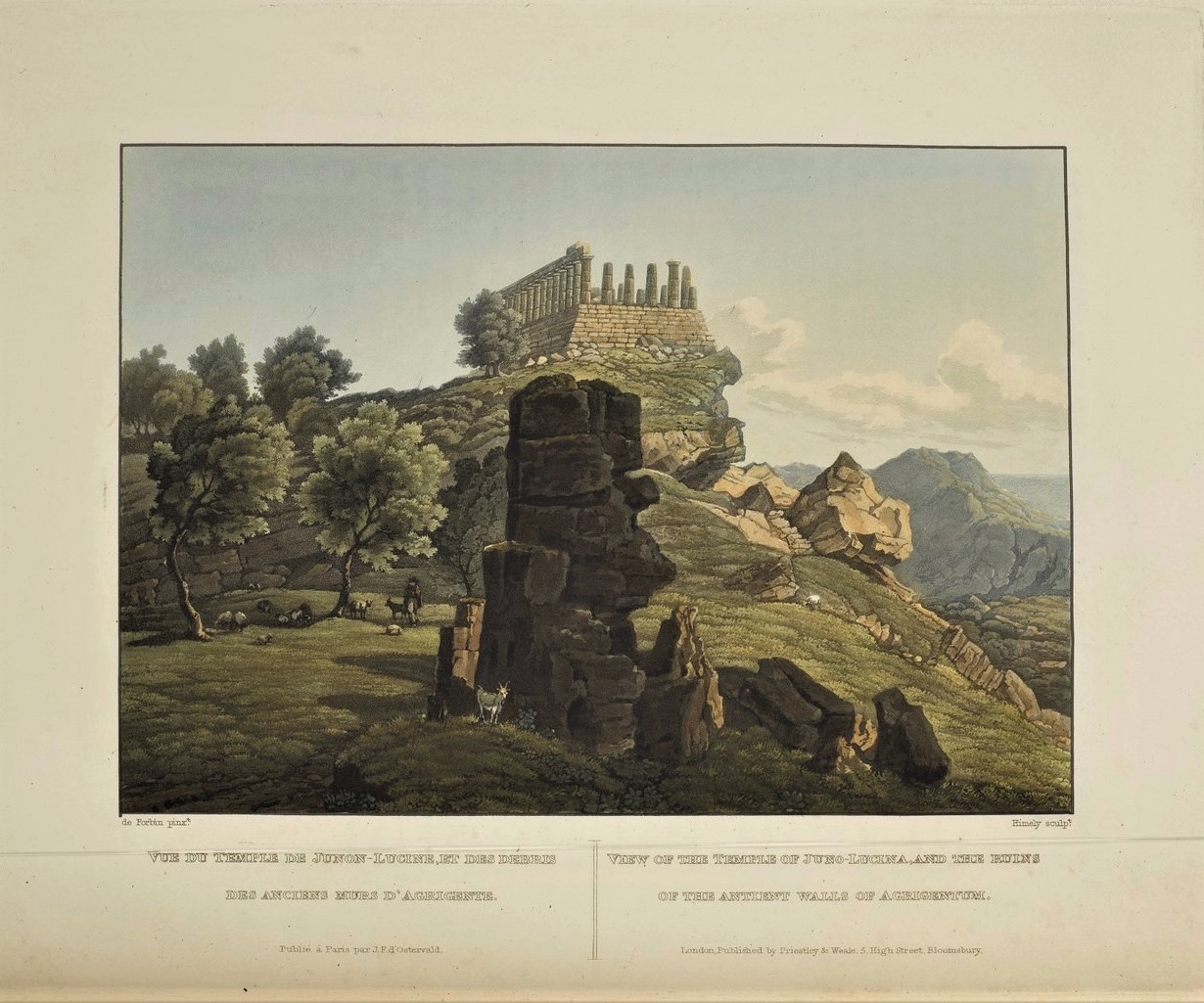
The title page of this book’ states that its etched illustrations were based on drawings “chosen from the portfolios of artists of different nations who have lately visited that country and are distinguished by their careful execution.” Artists and printmakers are identified by their surnames just below the border of the image, an artist named Canstre originally drew the Temple at Selinus and Forbin the Temple of Juno, both prints were made by an etcher identified as Himely. The international nature of this project is apparent from the inscriptions in French and English beneath each illustration as the book was originally published in Paris and later translated into English.
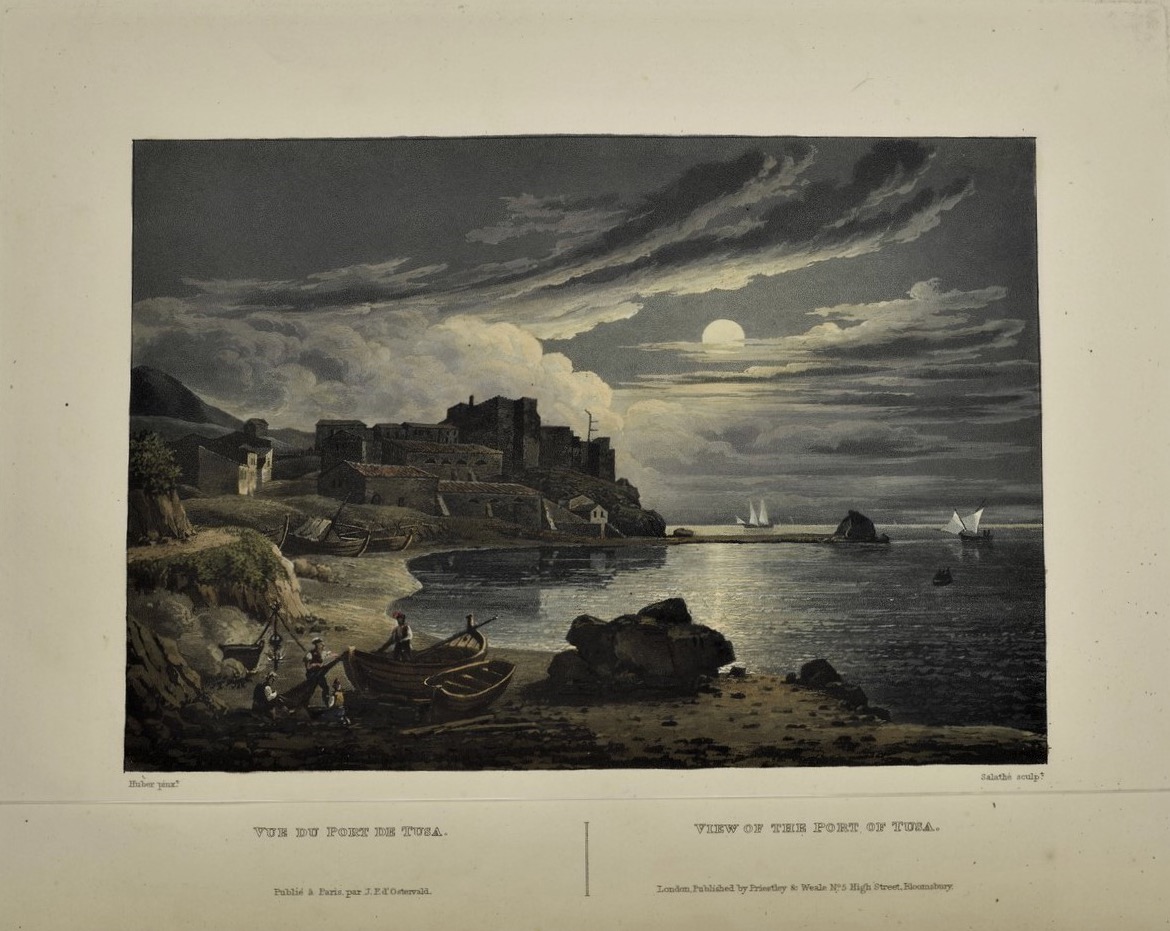
In addition to the publisher’s archaeological interests, the illustrations also invoke the aesthetic theories of the sublime (the dramatic and dangerous aspects of nature) and the beautiful (the tranquil and pleasing) theorised by Edmund Burke. These concepts are conveyed in the “beautiful” picturesque nocturnal scene of the Port at Tura (above) by etched Salathé after Huber’s drawing and “sublime” sweeping forms of Mount Etna by Reid after Forbin.
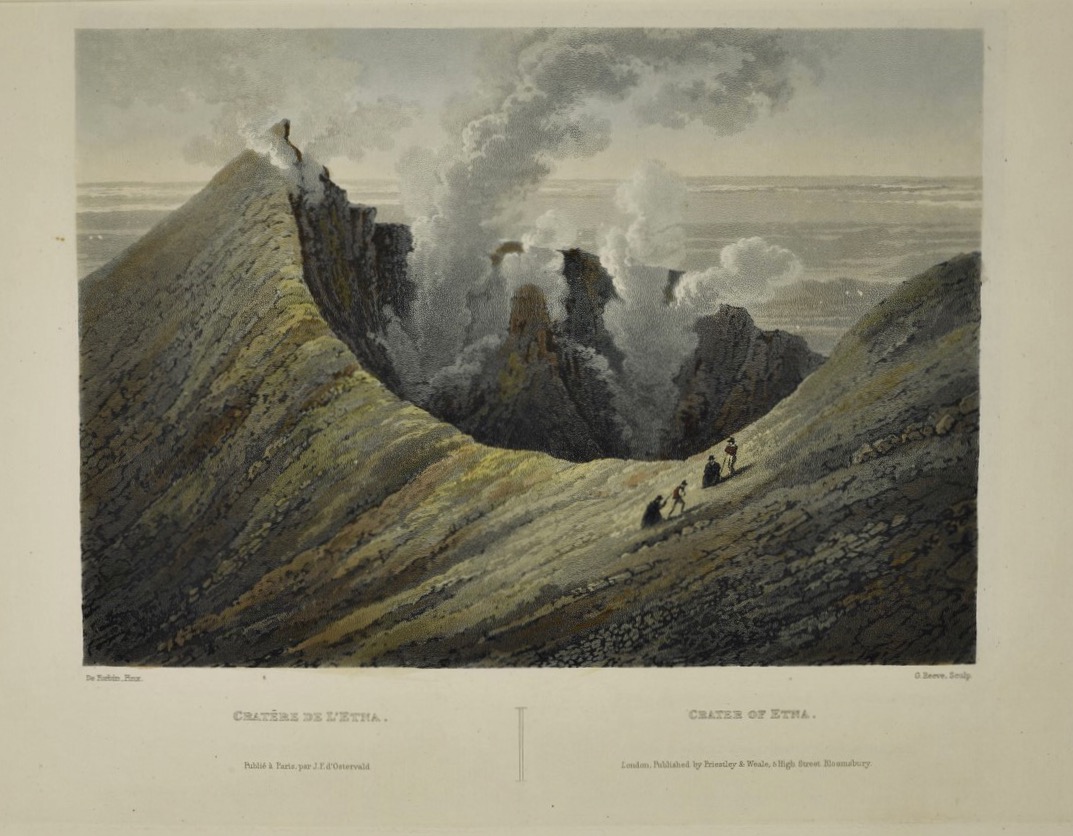
Urban landscapes could provide visual interest for viewers too. A History of the River Thames (Vol II) was published by John and Josiah Boydell a in 1796. Here, a series of hand coloured etchings by JC Stadler after drawings by J. Farrington trace the flow of the Thames representing the many historical sites and landmarks along its course.
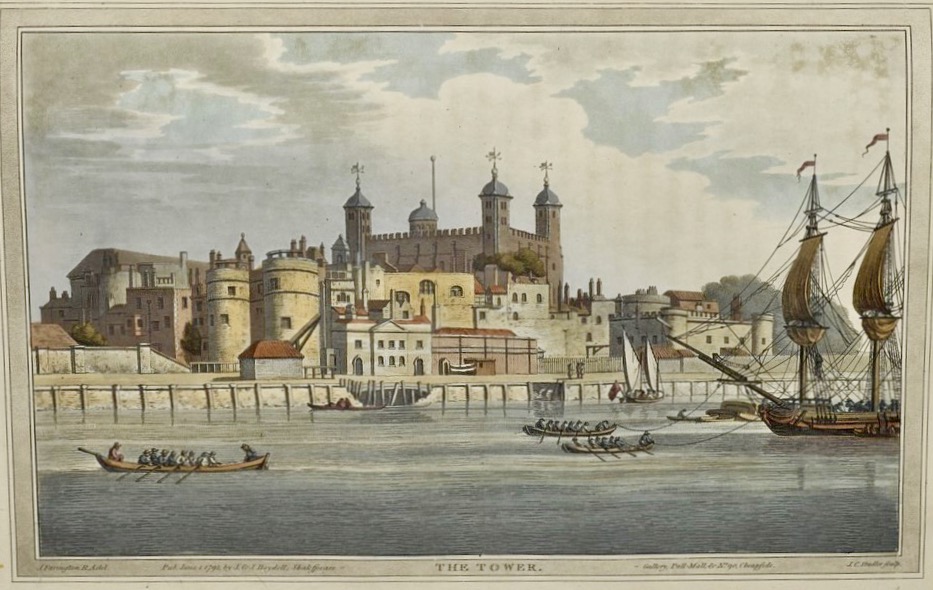
One student described the imposing image of the Tower of London: “The Tower is a skillfully made illustration. All of the colours are a bit washed out but you can still see all the details within the water, the bricks and the people […] You can see all the intricate strings and wires running through the ship. Compared to the tower and the buildings the boat seems quite ominous and dark. This may suggest that the boat is old and on the edge of crumbling.”
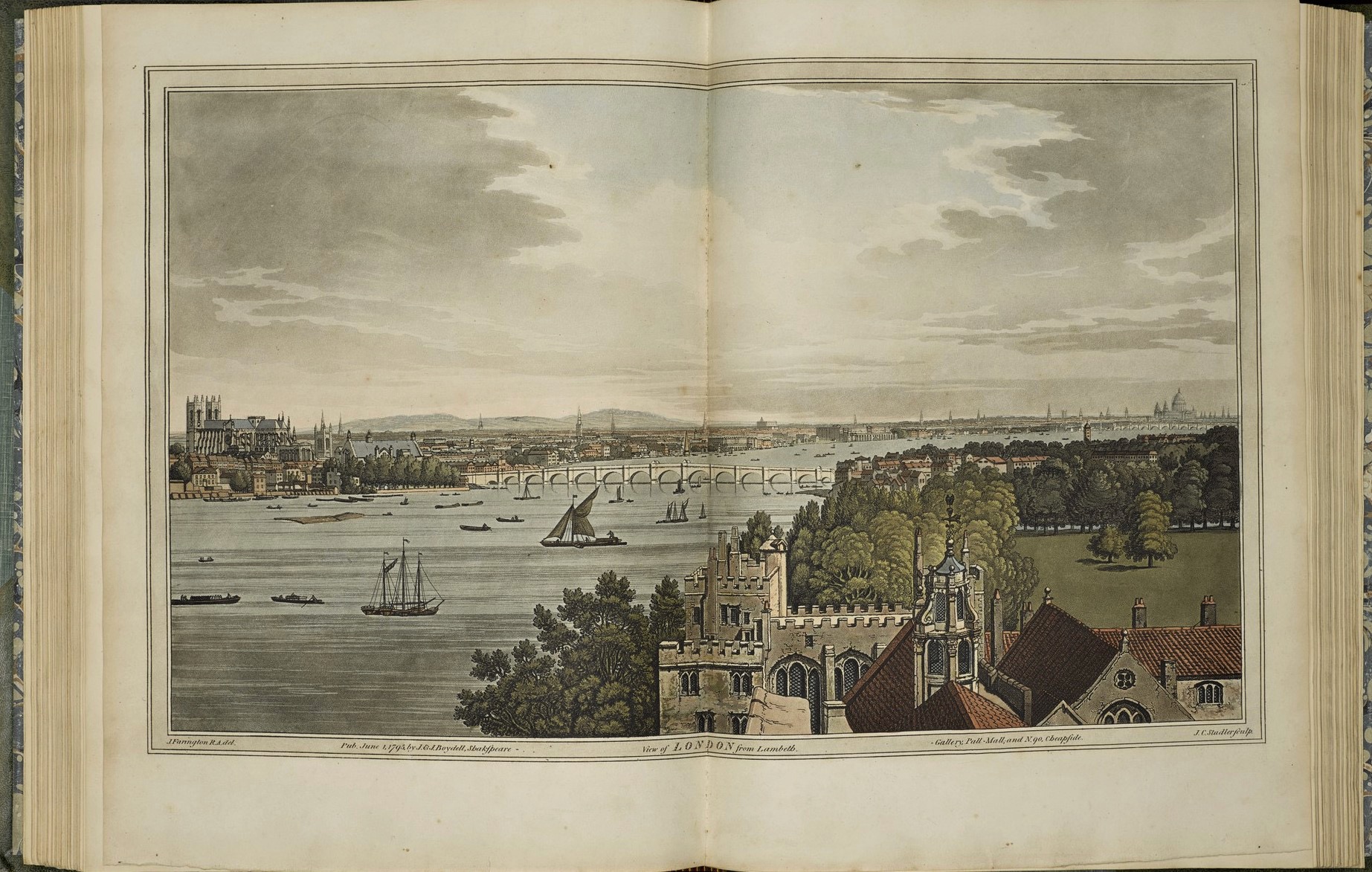
As well as eliciting subjective responses to the London landscape, The History of the River Thames gave students an insight into the possibilities of the book as a physical object. The double page illustrations like the view of London from Lambeth (above) offer a wide angled view with a deep perspective reminiscent of the visual effects of panoramas, theatre set designs and landscape painting.
The Temple of Flora
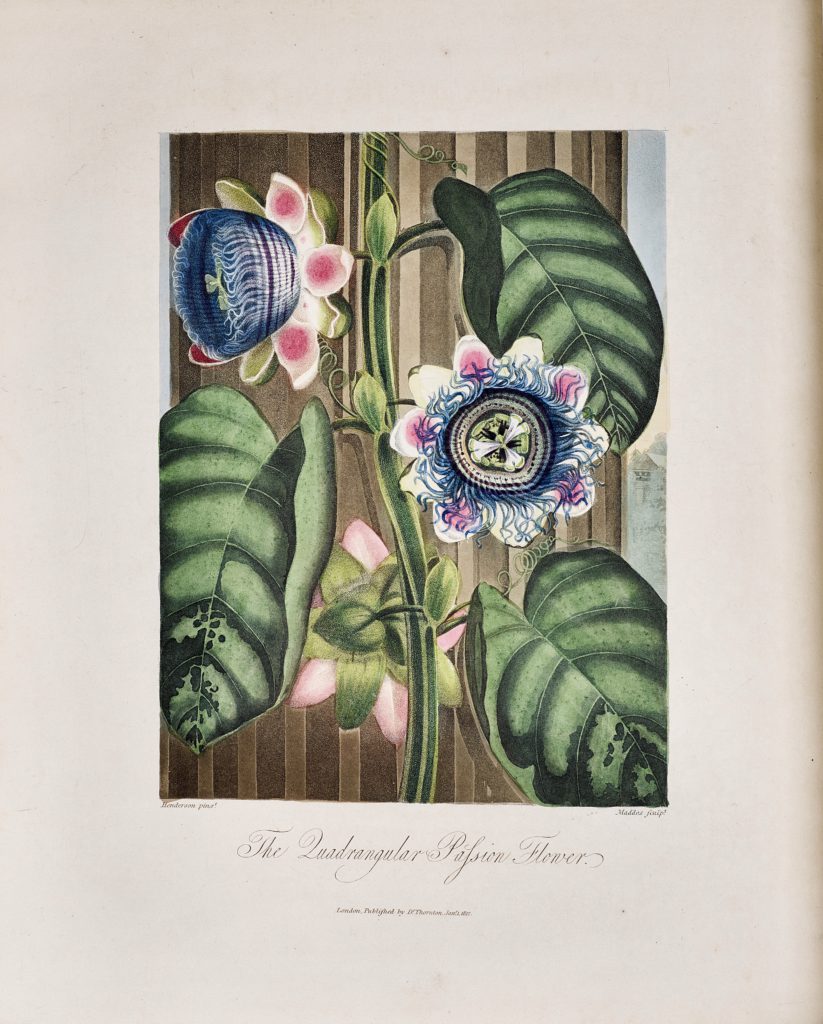
Robert Thornton’s The Temple of Flora (1799-1807) is comprised of thirty one botanical illustrations made by several artists including Thornton himself. As The Quadrangular Passion Flower by a printmaker named Maddox after Peter Henderson’s drawing (above) shows, each plate was made with a range of expertly combined printing techniques to achieve striking forms and vivid colour. These close up studies of flowering plants are often set in dramatic landscapes with carefully placed evocative details. A student from BACA sums up the character of the book in a description of The Nodding Renealmia by Roffe after Henderson (below):
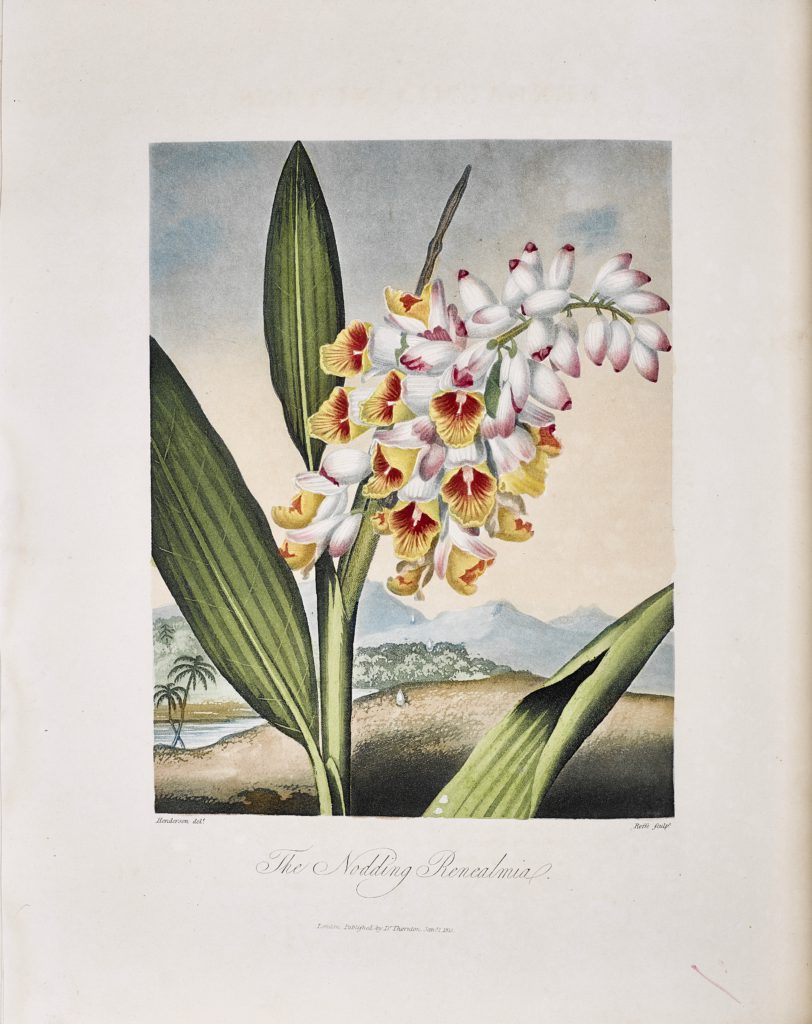
“It is a white, pink and yellow flower. It has a large leaf. The background of it is a forest and some mountains along with a river. Each flower in this book has a poem with it. The detail on the image is very creative. There are raindrops coming off the flower and are on it.”
The Temple of Flora blurs the boundaries between science and art. It illustrates writings of the botanist Carolus von Linnaeus (1707-1778) and is informed by the Enlightenment’s fascination with scientific observation. However, the reader/ viewer could evidently enjoy the book as a work of art and its images have an imaginative quality as this student’s poetic description of The Pontic Rhododendron by Roffe after Henderson (a detail of which opens this section) suggests:
“In the image, the butterfly flourishes elegantly whilst the plants behind it rise with a tint of sunlight connecting to their gaze.”
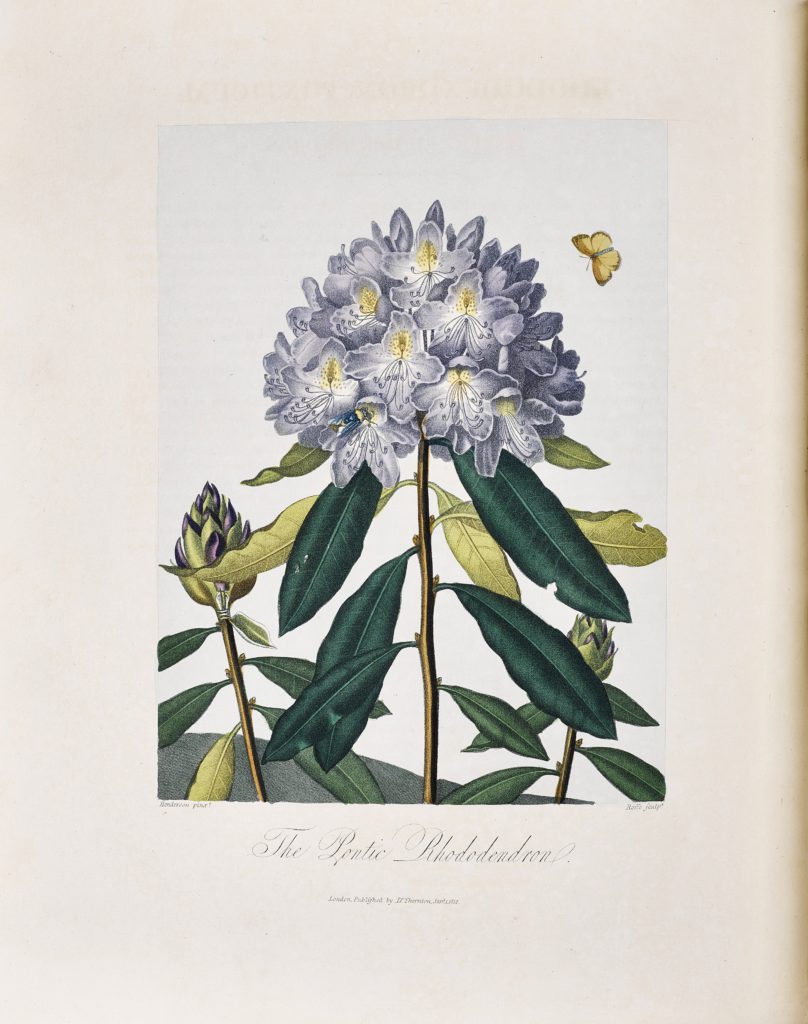
‘Illustrated Natural History’

The Temple of Flora was a luxurious book aimed at an elite audience. In contrast, the Dalziel Archive shows how wood engraving made closely observed images of nature available to a wider public. Volume 16 of the Dalziel Archive records the many wood engraved illustrations made for the Reverend J. Wood’s Illustrated Natural History (1861-63). A page of proofs of plants (pictured above) shows a more austere yet similarly detailed and magnified observation of nature to the flowers in The Temple of Flora.
Dangerous Nature?
One student’s response to an illustration of a tiger from Wood’s Illustrated Natural History reminds us that these illustrations remain accessible today and resonate with our contemporary cultural responses to the natural world:
“I have chosen a picture of a tiger because it is cute and I love cats. It is very royal [..] like The Lion King but the Tiger King.”

“Trapped
In
Golden
Elegant
Rich Leaves.”
This student was able to transform their description of this image into a sensitively observed acrostic seen alongside the image above.
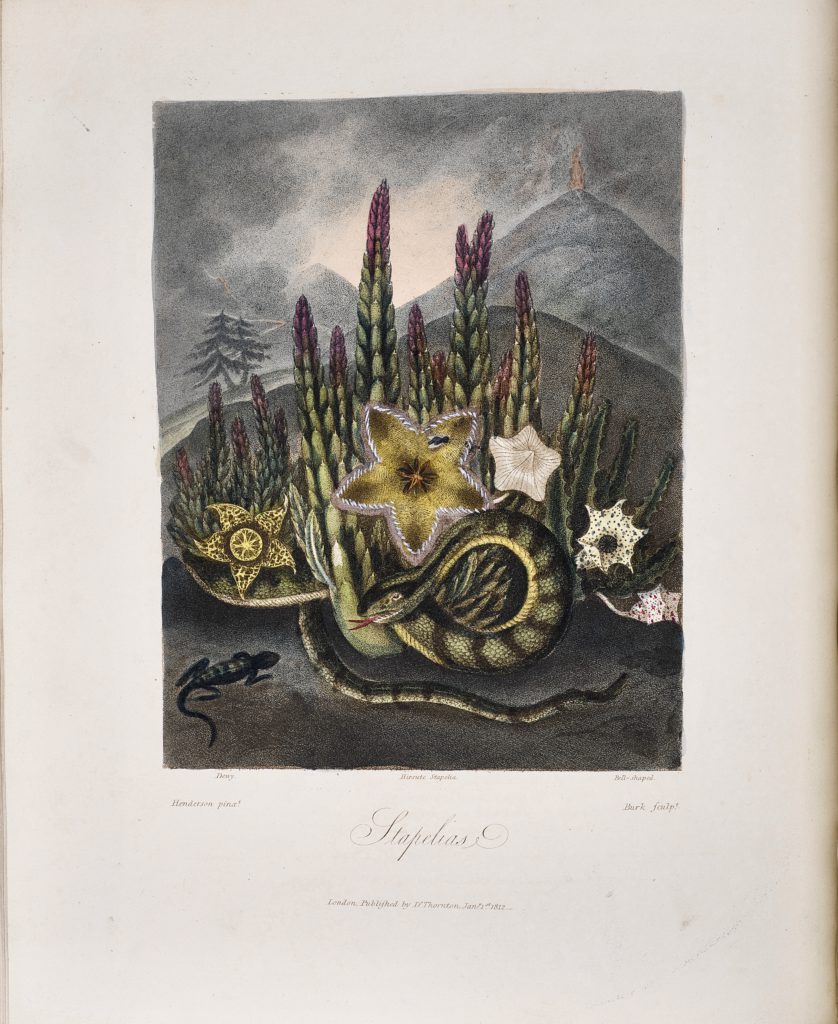
The representations of nature seen in this section are often effective for their ability to play on the tension between the visual pleasure of nature and its potential dangers. This can be seen above in the snake in front of the opulent flowers of The Hirsute Syapelia ( a print made by Burk after Henderson, from The Temple of Flora). The resting tiger in Wood’s Illustrated Natural History is another example of this. One student’s poem employs a multi-sensory response to the image of the tiger and situates what was a static natural history illustration in an unfolding story full of suspense:
“The feel of crusty leaves poking you
Every time you move
The scent of a fierce tiger
Going to pounce on you
Eyes of a hungry tiger
Paws with sharp claws that can rip you open
Ears that can hear you from afar.”
Student contributors: Alicia, Alisha, Cerys, Gordon, Jake, Lillian, Lucie-Lee, Nianna, Reuben, Robert, Rose, Sam, Sonny, Tamia, Thai.
Exhibition Intro ~ Map ~ Next section